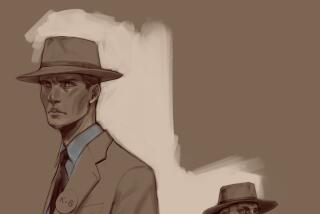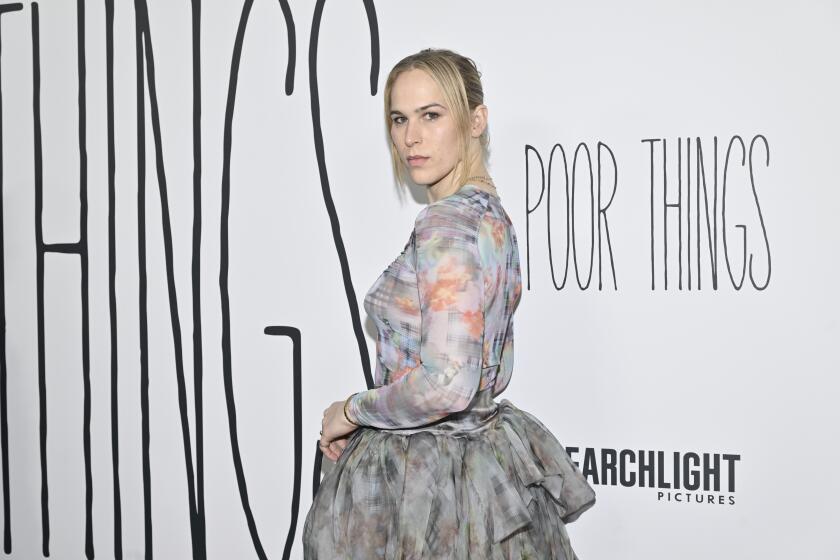Classic Hollywood: A colorful tribute to Disney’s Mary Blair
There were the Nine Old Men, Walt Disney’s famed founding animators, and then there was visual stylist Mary Blair.
Along with such legends as Marc Davis, Ollie Johnston, Frank Thomas and Wolfgang Reitherman, Blair worked on the studio’s animated features for more than 20 years — the only woman to have such a prominent role at Disney.
“She influenced the tone of the picture with her use of color and design,” said Michael Giaimo, art director on Disney’s 1995 “Pocahontas” and visual development artist on 2004’s “Home on the Range.” “So many design elements that were more finessed by the time the stories reached the screen, all had a genesis in her designs.”
Blair, who died in 1978 at age 66, is the subject of the Academy of Motion Picture Arts and Sciences’ 17th Marc Davis Celebration of Animation lecture Thursday evening at the Samuel Goldwyn Theater. “Mary Blair’s World of Color — A Centennial Tribute” will feature panelists Pete Docter, who directed the 2009 Oscar winner “Up” as well as 2001’s “Monsters, Inc.; Giaimo; Eric Goldberg, supervising animator for the Genie in 1992’s “Aladdin” and director of “Pocahontas”; his wife, Susan Goldberg, who was the art director for “Rhapsody in Blue” and “Carnival of Animals” sequences in “Fantasia/2000”; and Daisuke “Dice” Tsutsumi, art director on 2010’s Oscar-winning “Toy Story 3.” Animation historian Charles Solomon hosts.
Blair and her husband, Lee Everett Blair, were animators. Her husband joined Disney in the late 1930s and Blair followed him in 1940; a year later she worked on “Dumbo.” In 1941, the couple were invited to join other animators as well as Disney and his wife, Lillian, on a good-neighbor trip to various South American countries. Blair and her husband began work on concept art for the eye-popping Technicolor-animated films “Saludos Amigos” (1942) and 1944’s “The Three Caballeros,” with Blair receiving credit as art supervisor.
But she is best known for supplying the concept designs for Disney’s 1950 animated “Cinderella,” 1951’s “Alice in Wonderland” and 1953’s “Peter Pan.” She also designed the Fantasyland boat ride “It’s a Small World.”
Giamio said that Disney had incredible artists and amazing craftsman, “but where Mary Blair was unique was that the work that she did here at the studio was not only beautiful work, what she did went beyond the project into a pure art form. It became art. It became a statement unto itself.”
Her work, he added, transports you to another world. “Her most distinctive factor is that she is kind of showing us her soul. It is not just slick commercial art, it is the combination of commercial and the personal in the artistic sense. She puts herself into her art work and it transcends the greatest of the Disney movies.”
Her designs for “Cinderella,” said Giaimo, have a lot of whimsy but also a Chaplin-esque pathos quality. “They are moving as any great art,” he said. “There is a painting where Cinderella is in her nightgown in the morning looking longingly out the window at the castle. Her back is to you, so you don’t see her face. But you still see how powerful her wish, her dream is. There is one of her alone in her room, sort of head in hands. You don’t see her face again, but she’s sobbing.”
Susan Goldberg points out that Blair was “one of those few women at Disney who had any kind of say, at least in design and animation.”
But time hasn’t changed that much in the world of animation. “It is still today a boy’s club,” she lamented.
Goldberg admires Blair’s knack for “putting together simplified shapes and colors to make them really pop forward. She had a great ability with lighting. A lot of times in art direction, it seems very flat, but with just a little bit of lighting you can change the atmosphere of the whole scene.”
For more information go to https://www.oscars.org.
More to Read
The biggest entertainment stories
Get our big stories about Hollywood, film, television, music, arts, culture and more right in your inbox as soon as they publish.
You may occasionally receive promotional content from the Los Angeles Times.







